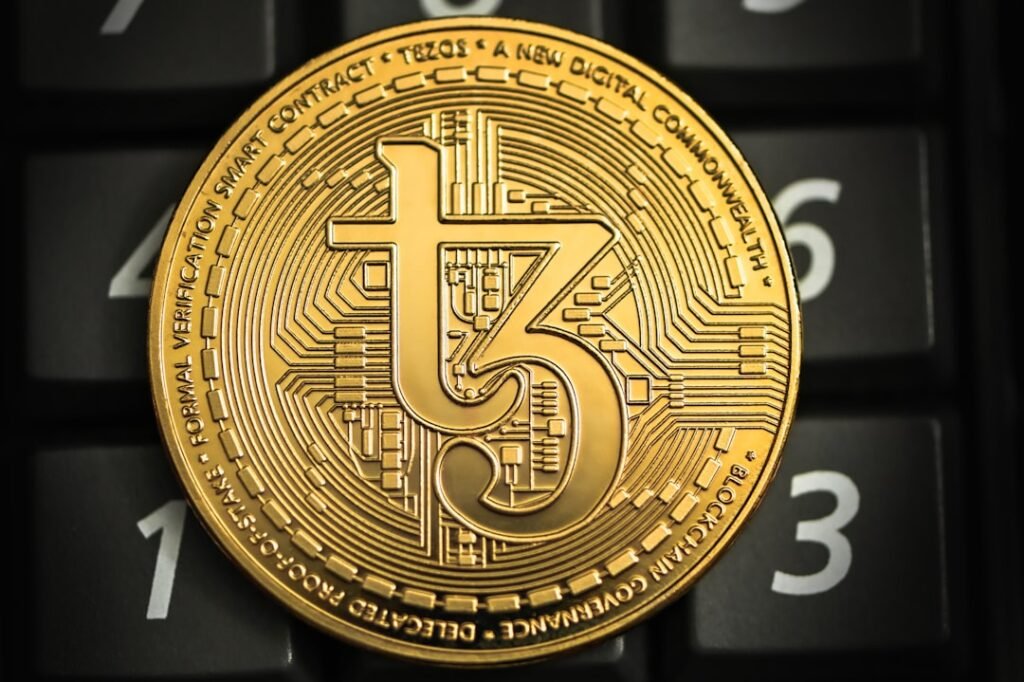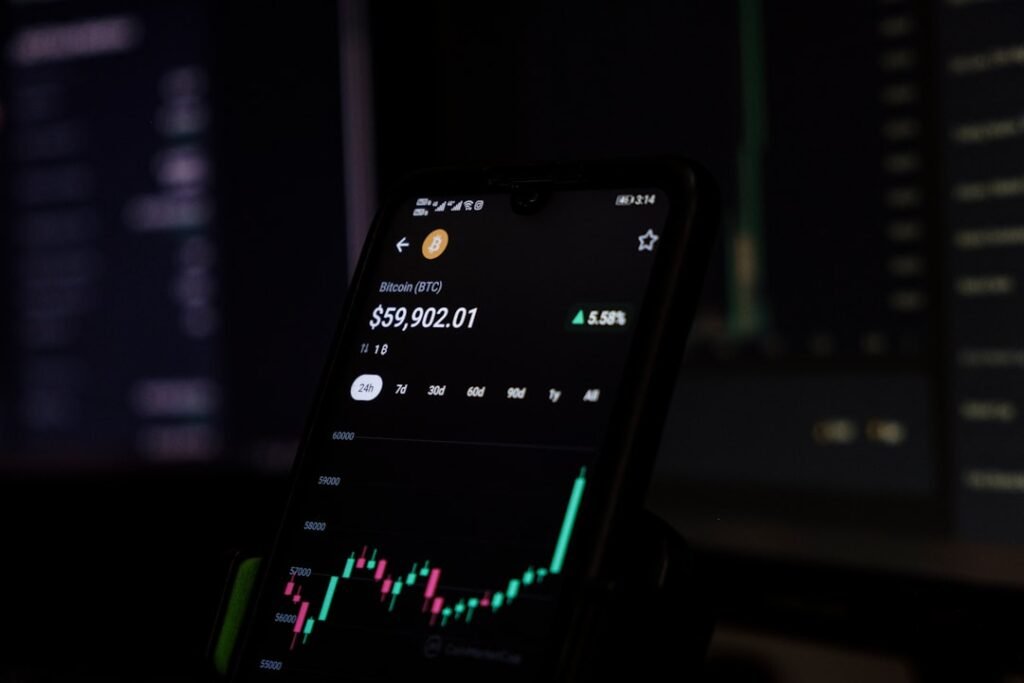The Ultimate Beginner's Guide to Setting Up Your First Cryptocurrency Wallet
The cryptocurrency landscape continues its explosive growth, presenting unique opportunities for traders and investors. Your gateway to participating in this digital revolution? A secure cryptocurrency wallet. This essential tool allows you to store, send, and receive digital assets. Forget complex jargon; this step-by-step guide demystifies the process of choosing and setting up your very first crypto wallet, covering software, hardware, and paper options.
Why You Absolutely Need a Crypto Wallet
Unlike traditional money held in banks, cryptocurrency exists on decentralized blockchain networks. Your wallet doesn't physically "hold" coins like a leather billfold holds cash. Instead, it securely stores the cryptographic keys – the private key and public key – that prove your ownership of crypto assets on the blockchain and allow you to interact with them.
- Public Key (Wallet Address): Think of this like your bank account number. You share it publicly so others can send crypto to you.
- Private Key: This is your super-secret password, akin to your bank account PIN. It grants access to spend or transfer the crypto associated with your public address. Guard this with your life! If someone else gets it, they control your funds. If you lose it, your crypto is likely gone forever.
Now, let's dive into the different types of wallets and how to set them up.
Type 1: Software Wallets (Hot Wallets) – Convenience First
Software wallets are applications you download onto your computer or smartphone. They are "hot" wallets because they connect to the internet, making transactions quick and easy. Ideal for beginners and those actively trading or using crypto for payments.
How to Create a Software Wallet:
-
Select a Reputable Wallet App: Research is crucial. Look for well-established providers with strong security features (like two-factor authentication – 2FA) and positive user reviews. Popular options include:
- Exodus: Best for beginners (Supports 260+ currencies, built-in exchange).
- Trust Wallet: Excellent mobile option (Owned by Binance, supports a vast array of tokens).
- Coinbase Wallet: User-friendly, good for accessing decentralized apps (dApps) (Separate from Coinbase exchange account).
- Electrum: Best for Bitcoin purists (Lightweight, highly customizable fees).
- MetaMask: The go-to wallet for Ethereum and EVM-compatible chains (Essential for DeFi and NFTs).
-
Download the App: Always download the app directly from the official provider's website or official app stores (Google Play Store, Apple App Store). Avoid third-party links to prevent downloading malicious software.
-
Create Your Account: Launch the app. You'll typically be asked to:
- Choose a strong, unique password.
- Securely write down your Recovery Phrase (Seed Phrase). This is usually a random sequence of 12 or 24 words. This phrase is the master key to restore your wallet and all its funds if you lose your device or forget your password. Write it down on paper (multiple copies) and store it offline in secure locations (like a safe). Never store it digitally or share it with anyone.
- Some wallets (especially those linked to exchanges like the main Coinbase app) may require identity verification (KYC) involving your name, email, phone number, and possibly a government ID.
-
Transfer Crypto to Your Wallet:
- Buy Directly: Some wallets (like Exodus, Trust Wallet, Coinbase Wallet) allow you to buy crypto directly using a bank account or card (often via integrated third-party services).
- Receive from an Exchange: If you bought crypto on an exchange (like Coinbase, Kraken, Binance), withdraw it to your new software wallet. You'll need your wallet's public address (a long string of letters/numbers or a QR code). Copy/paste this address carefully into the exchange's withdrawal section.
- Receive from Another Wallet: Someone can send crypto directly to your wallet's public address.
Top Software Wallets Compared:
| Wallet | Best For | Currencies Supported | Built-in Exchange | Custom Fees | Hardware Compatible |
|---|---|---|---|---|---|
| Exodus | Beginners | 260+ | Yes | Yes | Yes |
| Electrum | Bitcoin Users | 1 (Bitcoin) | No | Yes | Yes |
| Trust Wallet | Mobile & Diversity | Hundreds of thousands | Yes | Yes | Yes |
| Coinbase Wallet | dApps & Low Cost | Hundreds of thousands | Yes | Yes | Yes |
| MetaMask | Ethereum & DeFi | Ethereum & EVM chains | Yes (via integrations) | Yes | Yes |
Type 2: Hardware Wallets (Cold Wallets) – Maximum Security
Hardware wallets are physical devices (like USB sticks) designed specifically for offline crypto storage. They generate and store your private keys offline ("cold storage"), making them highly resistant to online hacks. Essential for securing significant crypto holdings or long-term "HODLing."
How to Set Up a Hardware Wallet:
-
Purchase a Device from an Authorized Reseller: Only buy directly from the manufacturer's official website (e.g., Ledger, Trezor) or authorized partners. Avoid second-hand devices or third-party marketplaces to prevent tampering. Popular choices:
- Ledger Nano X: Best overall (Bluetooth, large asset support, ~$149).
- Trezor Model T: Best security features (Touchscreen, ~$219).
- KeepKey: Simpler, budget-friendly option.
-
Initialize the Device & Install Software:
- Connect the device to your computer via USB (or Bluetooth for Nano X).
- Follow the on-screen instructions on the device itself.
- Set a Strong PIN Code directly on the device.
- Write Down Your Recovery Phrase: The device will generate a 12-24 word seed phrase. Write this down meticulously on paper and store it securely offline. This is your lifeline if the device is lost or damaged. Never digitize it.
- Download and install the official companion software (e.g., Ledger Live, Trezor Suite) on your computer.
-
Install Blockchain Apps (if needed): Some hardware wallets require you to install small applications ("apps") for each specific cryptocurrency you want to manage (e.g., Bitcoin app, Ethereum app) via the companion software.
-
Transfer Crypto to Your Wallet:
- Use the companion software to generate a receiving address for the cryptocurrency you want to transfer.
- Send crypto from your exchange account or software wallet to this hardware wallet address. Confirm the transaction details on the hardware device's screen before approving.
Top Hardware Wallets Compared:
| Wallet | Best For | Type | Cost | Built-in Exchange | Compatible Software |
|---|---|---|---|---|---|
| Ledger Nano X | Overall Security | Cold | ~$149 | Yes | Ledger Live |
| Trezor Model T | Advanced Security | Cold | ~$219 | Yes | Trezor Suite |
| KeepKey | Simplicity | Cold | ~$79 | Yes (via ShapeShift) | KeepKey Client |
Type 3: Paper Wallets – Archaic but Ultra-Cold
A paper wallet is simply a physical document containing your public address and private key, often printed as QR codes. It's the ultimate form of "cold storage" as it's completely offline. However, they are cumbersome to use, vulnerable to physical damage/loss, and considered outdated and risky for beginners due to potential pitfalls in generation and secure usage.
How to (Carefully) Create a Paper Wallet:
-
Find a Reputable Generator (Use Extreme Caution): Only use well-known, open-source generators like BitAddress.org or WalletGenerator.net. Scrutinize the website URL to avoid phishing clones.
-
Go Completely Offline: Disconnect your computer from the internet before generating the keys. This prevents malware from stealing your keys during generation.
-
Generate Keys Securely: Run the generator offline. Move your mouse randomly or type random keys to create entropy for true randomness.
-
Print Securely: Print the generated page containing the public address and private key (and QR codes) immediately while still offline. Use a printer not connected to a network if possible.
-
Store Physically Securely: Laminate the paper or use a fire/water-resistant safe. Store multiple copies in separate secure locations. Never photograph or scan it digitally.
-
Fund It: Send crypto to the public address on the paper.
Crucial Paper Wallet Warning: To spend funds, you typically need to "sweep" the entire balance into a software or hardware wallet by importing the private key. This exposes the key online during the process. Paper wallets are generally not recommended for new users due to complexity and security risks.
Hosted Wallets (Exchange Wallets) – The Easiest Start
Many beginners start with a hosted wallet provided by a cryptocurrency exchange (like Coinbase, Kraken, Crypto.com). When you buy crypto on these platforms, it's automatically held in a wallet they control ("custody").
- Pros: Extremely easy to set up (just create an exchange account). No private key management (they handle it). Easy recovery if you forget your password. Often the simplest way to buy crypto with traditional money.
- Cons: "Not your keys, not your crypto." You rely entirely on the exchange's security and solvency. You don't control the private keys. Limited access to advanced crypto features (DeFi, staking on some chains). Potential withdrawal restrictions. Subject to exchange regulations/hacks.
Setting up is identical to creating an exchange account: Provide personal info (KYC), set a strong password + 2FA, and buy crypto.
Self-Custody vs. Hosted: The Core Choice
The fundamental decision is between self-custody and hosted custody:
- Self-Custody (Software/Hardware/Paper Wallets): You control the private keys. Maximum control and access to the full crypto ecosystem (DeFi, NFTs, dApps). Maximum responsibility for security (protecting seed phrase). Risk of permanent loss if keys are lost.
- Hosted Custody (Exchange Wallets): The exchange controls the private keys. Easier onboarding and recovery. Limited functionality. Counterparty risk (exchange hack, bankruptcy, freezing accounts).
What You Need to Get Started
Regardless of wallet type, here's what you'll typically need:
- A Device: Smartphone or computer for software wallets; computer for hardware/paper setup.
- Internet Connection: For setup and transactions (except paper key generation).
- Personal Information (For Hosted/Some Software Wallets): Name, email, phone number, potentially ID for KYC.
- Understanding of Keys: Know what your public address (share) and private key/seed phrase (NEVER share) are.
- Some Cryptocurrency: To transfer into your new wallet (unless buying directly within the wallet).
Key Factors When Choosing Your Wallet
Don't just pick the first option. Consider these crucial aspects:
- Security (Paramount!): Is it open-source and audited? Does it offer strong encryption? Does it support 2FA? Does it give you full control of your keys (self-custody)? What's its security track record? Hardware wallets offer the highest security for self-custody.
- Supported Cryptocurrencies: Does it support all the coins and tokens you own or plan to acquire? Check the official wallet website for the list.
- Ease of Use (User Interface): Is the interface intuitive, especially for beginners? Exodus and Coinbase Wallet are known for user-friendliness.
- Fees: While wallets themselves are usually free (except hardware purchase), be aware of network transaction fees ("gas fees" on Ethereum, miner fees on Bitcoin) paid to the blockchain when sending crypto. Some wallets allow fee customization.
- Platform Compatibility: Does it work on your operating system (Windows, macOS, Linux, iOS, Android)? Hardware wallets need companion software compatible with your OS.
- Backup & Recovery: How easy is it to securely back up your seed phrase? What's the recovery process if you lose your device? Self-custody wallets rely entirely on you backing up the seed phrase.
- Customer Support: Does the provider offer reliable support if you encounter issues? Check community forums and reviews.
- Additional Features: Do you need built-in exchange, staking, dApp browser, NFT support, or multi-signature capabilities? Choose a wallet that matches your intended use.
Understanding Crypto Wallet Basics
- Seed Phrase/Recovery Phrase: The master key (12 or 24 words) that generates all your wallet's private keys. Backing this up securely is the single most important security step.
- Gas Fees: Transaction fees paid to the blockchain network (e.g., Ethereum) to process transactions. They fluctuate based on network congestion. You need native currency (e.g., ETH for Ethereum) in your wallet to pay gas fees.
- Wallet Address: Your public receiving address (a long alphanumeric string or QR code). Share this to receive funds.
- Bridging: Moving crypto assets from one blockchain network to another (e.g., Ethereum to Polygon) using specialized bridges. Requires interacting with dApps.
- DEX (Decentralized Exchange): Platforms like Uniswap or Sushiswap where you can trade crypto directly from your self-custody wallet without an intermediary. Requires paying gas fees.
- Airdrops: Free distribution of new tokens, often to active users of a protocol or holders of a specific asset. Usually require interacting with dApps using a self-custody wallet.
Common Crypto Wallet FAQs
- Are crypto wallets free?
- Software wallets: Generally free to download and use, though you pay network transaction fees.
- Hardware wallets: Require purchasing the physical device ($50-$250+).
- Hosted wallets: Free to open, exchanges charge trading/withdrawal fees.
- Paper wallets: Free to generate (if done carefully).
- What happens if I lose my seed phrase? If you lose your seed phrase for a self-custody wallet (software/hardware/paper), you permanently lose access to all funds stored in that wallet. There is no recovery service. This underscores the critical importance of secure, offline backup.
- What happens if my hardware wallet breaks? As long as you have your seed phrase, you can recover your funds. Purchase a new hardware wallet (or compatible software wallet) and use the "Restore" or "Recover" function with your original seed phrase. Your crypto is stored on the blockchain, not the physical device.
- What are the risks of storing cryptocurrency?
- Hacking/Phishing: Malware, fake websites, or scams tricking you into revealing your seed phrase or private key.
- User Error: Losing your seed phrase, sending funds to the wrong address.
- Exchange Risk (Hosted Wallets): Exchange hacks, bankruptcy, or withdrawal freezes.
- Smart Contract Risk (DeFi): Vulnerabilities in dApps you interact with.
- Permanent Loss: Due to lost keys or sending to an incorrect/incompatible address.
- Can I have multiple wallets? Absolutely! Many users have different wallets for different purposes: a hardware wallet for long-term savings, a mobile software wallet for small spending amounts or DeFi, and potentially a hosted wallet for easy buying/selling. Never reuse the same seed phrase across multiple wallets.
Getting Started with Your Wallet: A Quick Walkthrough
- Choose Your Wallet Type: Decide based on your security needs and usage (Hardware for savings, Software for active use, Hosted for easy buying).
- Select & Set Up: Follow the specific setup steps outlined above for your chosen wallet type.
- Backup Your Seed Phrase (Crucial for Self-Custody): Write it down offline, multiple times, store securely (safe deposit box, home safe). Never store it digitally.
- Fund Your Wallet:
- Buy crypto directly within the wallet if supported (via linked bank/card).
- Buy crypto on a reputable exchange and withdraw











